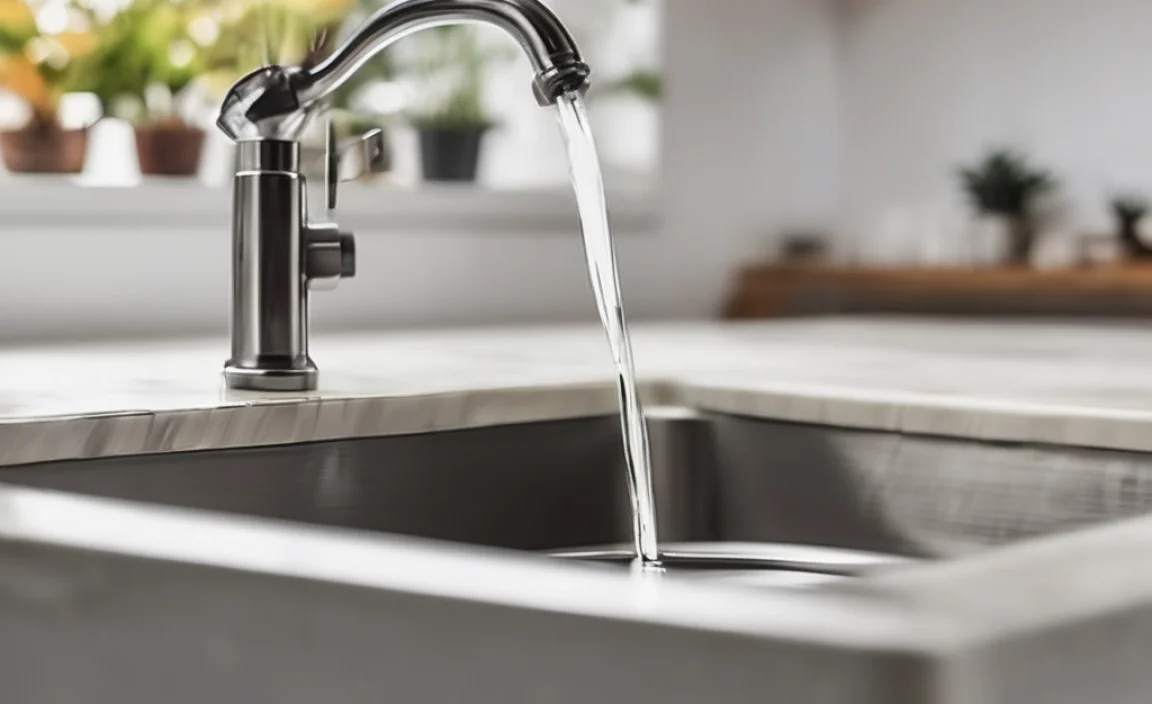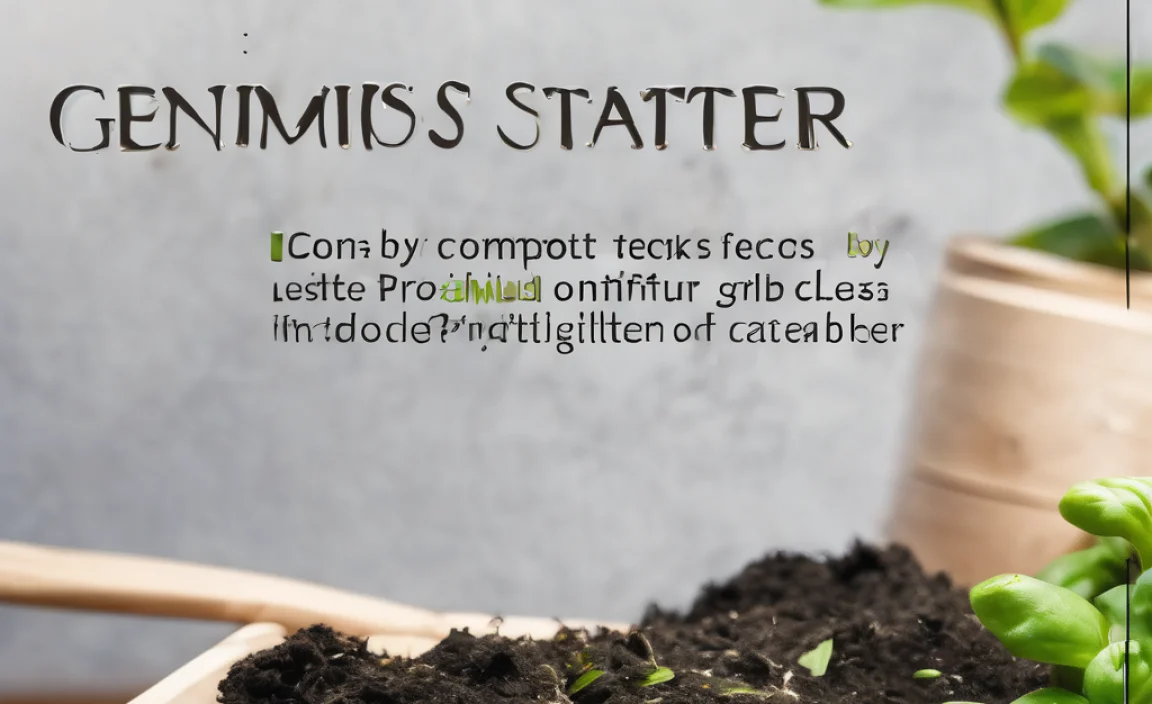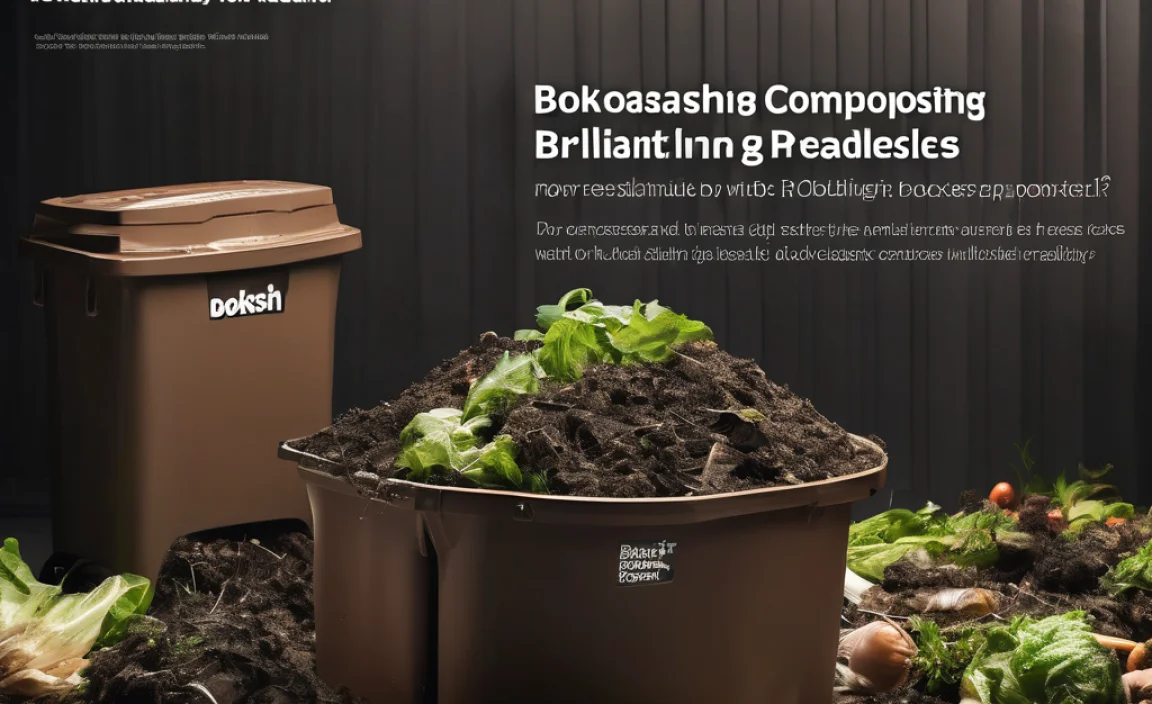Quick Summary: Got a stubborn, greasy clog in your sink? Don’t worry! You can usually unclog it yourself without calling a plumber. Start by pouring boiling water down the drain. If that doesn’t work, try a mixture of baking soda and vinegar, or use a bent wire hanger to break up the clog. For tougher clogs, a plunger or drain snake might do the trick. Always protect yourself with gloves and eye protection!
Is your kitchen sink draining slowly, or not at all? Grease and oil are common culprits behind these frustrating clogs. When hot oil cools down, it solidifies and sticks to the pipes. This can trap food particles and other debris, leading to a nasty blockage. But don’t stress! There are several easy ways to tackle this problem yourself.
In this guide, I’ll walk you through simple, step-by-step methods to unclog that oily sink. We’ll start with the gentlest approaches and move on to stronger solutions if needed. Let’s get that water flowing freely again!
Understanding Oil Clogs in Your Sink

Before we dive into solutions, let’s understand why oil clogs are so common and problematic. Knowing the enemy helps us fight it better!
Why Oil Causes Clogs
Oil and grease are liquid when hot, but they solidify as they cool. When you pour them down the drain, they cling to the pipe walls. Over time, layers of grease accumulate. This sticky buildup traps food scraps, hair, and other debris, eventually forming a solid clog that restricts water flow. According to the EPA, fats, oils, and grease (FOG) are a major cause of sewer system backups.
Problems Caused by Oil Clogs
- Slow Drainage: Water drains slowly, leaving a messy sink.
- Foul Odors: Trapped food and grease decompose, causing unpleasant smells.
- Complete Blockage: The sink won’t drain at all, rendering it unusable.
- Pipe Damage: Severe clogs can increase pressure and damage pipes.
- Sewer Backups: In extreme cases, the clog can extend into the main sewer line, causing backups in your home or neighborhood.
Preventing Oil Clogs
Prevention is always better than cure! Here are a few tips to avoid oil clogs in the first place:
- Never pour oil down the drain: Always dispose of cooking oil properly.
- Wipe greasy dishes before washing: Use paper towels to remove excess grease.
- Use a grease trap: Install a grease trap in your sink to catch fats and oils.
- Flush with hot water: After washing greasy dishes, flush the drain with hot water for a few minutes.
Simple Steps to Unclog Oil in Sink

Okay, let’s get down to business! Here are several methods to unclog that oily sink, starting with the simplest ones.
Method 1: Boiling Water
This is often the first and easiest method to try. Boiling water can melt the solidified oil and flush it away.
Steps:
- Boil water: Heat a kettle or pot of water until it’s boiling.
- Pour slowly: Carefully pour the boiling water down the drain in a steady stream.
- Wait: Give the hot water a few minutes to work.
- Flush with tap water: Turn on the tap and see if the water drains normally.
- Repeat if necessary: If the sink is still draining slowly, repeat the process.
Pros:
- Simple and quick.
- No chemicals needed.
- Environmentally friendly.
Cons:
- May not work on severe clogs.
- Can damage PVC pipes if the water is excessively hot (use caution).
Method 2: Baking Soda and Vinegar
This classic combination creates a fizzing action that can break up grease and grime. It’s a natural and effective alternative to harsh chemical drain cleaners.
Steps:
- Pour baking soda: Pour about one cup of baking soda down the drain.
- Add vinegar: Follow with one cup of white vinegar.
- Let it fizz: Let the mixture fizz for 20-30 minutes.
- Flush with boiling water: After the fizzing stops, pour a kettle of boiling water down the drain to flush away the loosened debris.
- Check drainage: Turn on the tap to see if the sink drains properly.
- Repeat if needed: If the clog persists, repeat the process.
Pros:
- Natural and non-toxic.
- Effective on many types of clogs.
- Inexpensive and readily available.
Cons:
- May not work on very stubborn clogs.
- Requires some waiting time.
Method 3: Dish Soap and Hot Water
Dish soap is designed to cut through grease. Combining it with hot water can help dissolve the oily buildup.
Steps:
- Pour dish soap: Squirt a generous amount of dish soap (about 1/4 cup) down the drain.
- Add hot water: Slowly pour a pot of very hot (but not boiling) water down the drain.
- Wait: Let the mixture sit for 20-30 minutes.
- Flush with tap water: Turn on the tap and see if the water drains normally.
- Repeat if needed: If the clog persists, repeat the process.
Pros:
- Easy and readily available.
- Safe for most pipes.
Cons:
- Not as powerful as baking soda and vinegar.
- May not work on heavy-duty grease clogs.
Method 4: Wire Hanger
A bent wire hanger can be used to manually break up and remove the clog. This is a good option for clogs that are close to the drain opening.
Steps:
- Straighten the hanger: Straighten a wire coat hanger as much as possible, leaving a small hook at the end.
- Insert the hanger: Carefully insert the hooked end of the hanger into the drain opening.
- Probe and break up the clog: Gently probe around to break up the clog and pull out any debris.
- Remove debris: Pull out the hanger and remove any gunk that comes out with it.
- Flush with hot water: After removing as much debris as possible, flush the drain with hot water.
- Repeat if needed: Continue probing and flushing until the sink drains freely.
Pros:
- No chemicals needed.
- Can remove large pieces of debris.
Cons:
- Can be messy.
- May scratch the sink or pipes if not careful.
- Only effective for clogs near the drain opening.
Method 5: Plunger
A plunger creates suction that can dislodge clogs. This method works best when there’s standing water in the sink.
Steps:
- Remove the strainer: Take out the sink strainer or stopper.
- Add water: Add enough water to the sink to cover the cup of the plunger.
- Position the plunger: Place the plunger over the drain opening, ensuring a tight seal.
- Plunge vigorously: Push and pull the plunger up and down vigorously for several minutes.
- Remove the plunger: Lift the plunger to see if the water drains.
- Repeat if needed: If the clog persists, repeat the plunging process.
Pros:
- Simple and effective for many types of clogs.
- No chemicals needed.
Cons:
- Can be messy.
- May not work on very stubborn or deep clogs.
Method 6: Drain Snake (Auger)
A drain snake, also known as an auger, is a flexible tool that can reach deep into the drainpipe to break up or retrieve clogs. This is a good option for stubborn clogs that are further down the drain.
Steps:
- Insert the snake: Carefully insert the end of the drain snake into the drain opening.
- Feed the snake: Push the snake down the drainpipe, rotating the handle as you go.
- Break up or retrieve the clog: When you encounter resistance, continue rotating the handle to break up the clog or hook onto it.
- Remove the snake: Slowly pull the snake out of the drainpipe, removing any debris that comes out with it.
- Flush with hot water: After removing the clog, flush the drain with hot water.
- Repeat if needed: If the sink is still draining slowly, repeat the process.
Pros:
- Effective for deep and stubborn clogs.
- Can break up or retrieve the clog.
Cons:
- Requires a special tool.
- Can be difficult to use.
- May scratch the pipes if not careful.
Method 7: Wet/Dry Vacuum
A wet/dry vacuum can be used to suck out clogs from the drain. This method works best when the clog is near the drain opening and there’s standing water in the sink.
Steps:
- Set up the vacuum: Configure your wet/dry vacuum for wet use.
- Position the hose: Place the vacuum hose over the drain opening, creating a tight seal. You may need to use a rag or duct tape to create a better seal.
- Turn on the vacuum: Turn on the vacuum and let it run for several minutes.
- Check the drain: Turn off the vacuum and remove the hose to see if the water drains.
- Repeat if needed: If the clog persists, repeat the process.
Pros:
- Can remove clogs without chemicals or manual probing.
- Effective for clogs near the drain opening.
Cons:
- Requires a wet/dry vacuum.
- May not work on very stubborn or deep clogs.
When to Call a Plumber

While these DIY methods can often resolve oil clogs, there are times when it’s best to call a professional plumber. Here are some situations where professional help is recommended:
- Persistent clogs: If you’ve tried multiple methods and the clog persists.
- Recurring clogs: If your sink clogs frequently, there may be an underlying issue.
- Slow drainage in multiple drains: If multiple drains in your home are draining slowly, it could indicate a problem with the main sewer line.
- Signs of pipe damage: If you notice leaks, cracks, or other signs of pipe damage.
A plumber has the tools and expertise to diagnose and resolve complex plumbing problems safely and effectively.
Safety Precautions
Before you start unclogging your sink, it’s important to take some safety precautions:
- Wear gloves: Protect your hands from dirty water and potential irritants.
- Wear eye protection: Protect your eyes from splashes and debris.
- Be careful with boiling water: Avoid burns by pouring boiling water slowly and carefully.
- Avoid mixing chemicals: Never mix different types of drain cleaners, as this can create dangerous fumes.
- Ventilate the area: Open a window or turn on a fan to ensure good ventilation.
Table: Unclogging Methods Comparison
| Method | Effectiveness | Ease of Use | Cost | Safety |
|---|---|---|---|---|
| Boiling Water | Low to Medium | Very Easy | Low | High |
| Baking Soda & Vinegar | Medium | Easy | Low | High |
| Dish Soap & Hot Water | Low | Easy | Low | High |
| Wire Hanger | Low to Medium | Medium | Low | Medium (risk of scratching) |
| Plunger | Medium | Easy | Low | High |
| Drain Snake | High | Medium to Hard | Medium | Medium (risk of scratching) |
| Wet/Dry Vacuum | Medium | Medium | Medium | High |
FAQ: Unclogging Oil in Sink
1. Why does oil clog my sink?
When hot oil cools, it turns solid and sticks to your pipes. This sticky mess traps food and other debris, causing a clog.
2. Can I use chemical drain cleaners for oil clogs?
While chemical drain cleaners can sometimes work, they can also damage your pipes and are harmful to the environment. It’s best to try natural methods first.
3. How often should I clean my drains to prevent oil clogs?
It’s a good idea to flush your drains with hot water after washing greasy dishes. You can also use a baking soda and vinegar mixture every few weeks to keep them clean.
4. What should I do with used cooking oil?
Never pour used cooking oil down the drain! Let it cool, then pour it into a sealed container and dispose of it in the trash. Some communities also have recycling programs for used cooking oil.
5. Will hot water always dissolve oil clogs?
Hot water can help melt and loosen oil clogs, but it may not be enough for severe blockages. Combining it with dish soap or baking soda and vinegar can increase its effectiveness.
6. Can a garbage disposal handle oil and grease?
No, garbage disposals are not designed to handle oil and grease. They can actually make the problem worse by grinding up the grease and spreading it further down the drain.
7. Is it safe to use boiling water in PVC pipes?
While boiling water can be effective, it’s important to use caution with PVC pipes. Extremely hot water can soften or damage PVC. It’s generally safe to use boiling water if you pour it slowly and avoid prolonged exposure.
Conclusion
Unclogging an oily sink doesn’t have to be a daunting task! By following these simple steps, you can often resolve the problem yourself without calling a plumber. Remember to start with the gentlest methods, like boiling water or baking soda and vinegar, and work your way up to more aggressive solutions if needed. And most importantly, take steps to prevent oil clogs in the first place by properly disposing of cooking oil and wiping greasy dishes before washing them.
With a little patience and persistence, you can keep your sink draining smoothly and avoid the frustration of oily clogs. So, roll up your sleeves, grab your gloves, and get ready to tackle that clog! You’ve got this!




